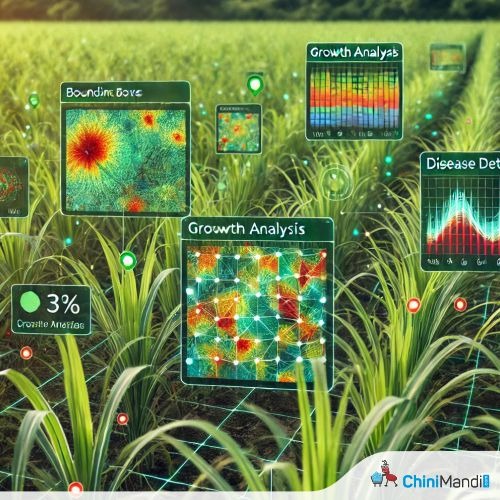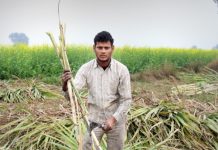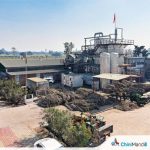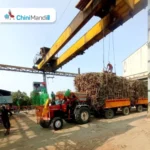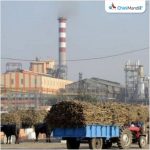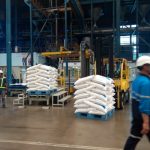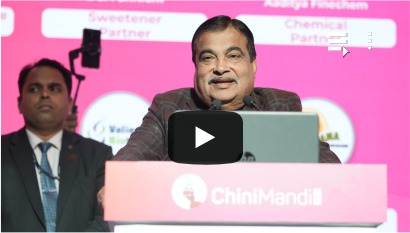Sangli: In a significant shift from traditional methods, sugarcane farmers in Maharashtra are increasingly adopting Artificial Intelligence (AI) to boost crop production and improve efficiency. This blend of modern technology and age-old farming techniques is already showing impressive results, according to farmers and agricultural experts, reports ETV Bharat.
Sanjeev Mane, a well-known sugarcane cultivator from Ashta in Sangli district, has been experimenting with sugarcane farming for over 15 years. His efforts have earned him the ‘Krishi Ratna Samman’ from the Maharashtra government, along with several other accolades. Mane guides farmers not only in Maharashtra, but also in Karnataka and Gujarat.
Mane claims to have achieved a record-breaking 168 tonnes of sugarcane per acre using AI-based farming methods. “Before turning to AI, it’s important to understand the basics of traditional sugarcane farming. Fertile land, proper plantation techniques, balanced use of chemical fertilisers, water management, and protecting the crop from diseases and pests are the five key factors that determine yield,” he explained.
He recounted his progress over the years: in 1997, he managed to grow 100 tonnes per acre, which rose to 125 tonnes in 2007, and then 150 tonnes in 2010. By 2017, despite aiming for 200 tonnes, he reached 168 tonnes — a feat he attributes to AI and scientific planning.
Sugar production in India, particularly in Maharashtra, has grown in recent years. However, challenges like unpredictable weather, crop diseases, and rising input costs have led to a decline in yield over the past two years. The average sugarcane output in India stands at 27 tonnes per acre, while Maharashtra performs slightly better at 32 tonnes per acre. In parts of western Maharashtra, some farmers manage to produce between 50 and 100 tonnes per acre, but such high-yield farmers are still few in number.
To tackle these issues, many farmers are now exploring AI-powered farming. “We have seen that AI can save money and time while boosting production,” said Mane. “Experts and scientists are also in favor of using AI in sugarcane farming.”
Under the guidance of former Agriculture Minister Sharad Pawar, work is underway to expand AI-based sugarcane farming in Maharashtra. Pilot projects are already being conducted in 260 locations across the state. Microsoft is helping to collect and analyze the data, while a command center has been set up at the Krishi Vigyan Kendra in Baramati to monitor progress.
Mane’s farm is one of the 260 sites using AI tools. “We’re already using some of the modern AI-based systems in our fields. The technology only works if there is drip irrigation. Without it, AI farming is not feasible,” he said.
The AI setup includes satellite imaging, weather monitoring stations, and sensors — ten different types placed in the soil. “A photo of the field is captured daily by satellite and sent to our phones. From day one of cultivation, we receive updates on plant growth, which areas need attention, and how to improve yield,” Mane explained.
These updates help farmers determine how much fertiliser to apply, both chemical and organic. They also provide real-time data on factors like leaf evaporation, soil moisture, humidity, wind speed, and sunlight, helping to decide the exact amount of water required.
“AI also gives advance warnings about weather changes, disease outbreaks, and pest infestations. It tells us when and how to act, which improves crop protection,” said Mane.
Another major advantage, according to Mane, is that farmers can set their yield targets. “Based on how many tonnes per acre you want to produce, AI gives precise recommendations for fertiliser and water. A farmer producing 30 tonnes can go up to 45 tonnes. If you’re already at 85 tonnes, AI can help you reach 100,” he said.
He believes that AI can bring economic stability to farmers’ lives. “With AI, you get more output with less cost, water, and labour. It protects soil fertility and allows for better planning. Farmers will spend less and earn more,” Mane concluded.

